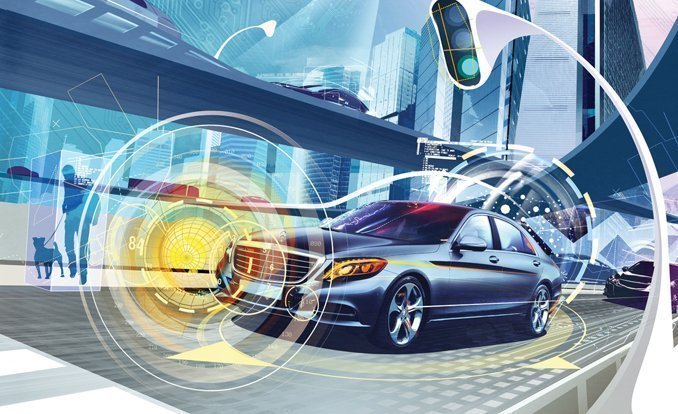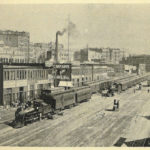
Technology in automotive industryBlockchain technology, which has already disrupted the economic solutions and supply chain industries, has at last arrived in the auto market. A paradigm shift to mobility as a service will inevitably force classic automobile companies to compete on numerous fronts. Mobility providers (Uber, for example), tech giants (such as Apple, Google), and specialty OEMs (Tesla, for instance) improve the complexity of the competitive landscape. Standard automotive players will really feel the squeeze, likely leading to shifting marketplace positions in the evolving automotive and mobility industries, potentially leading to consolidation or new forms of partnerships amongst incumbent players.
Nevertheless, the “age of invention” in the history of the automobile is, without having doubt, the nineteenth century: an era which saw the appearance of numerous sorts of powered vehicles, including these driven by steam engines, electric motors, and internal combustion engines. At the finish of the century, the internal combustion engine was firmly established as the top supply of automotive energy. At about the same time, the mechanical structure of the automobile was taking its final kind, as the steering wheel, Ackerman technique, and the front engine, rear-wheel drive (FR drive), and other mechanisms had been extensively adopted. In 1891, Panhard of France received a patent on the mechanical program that became the normal for subsequent automobiles.
As four technologies trends reshape the worldwide automotive sector , buyer preferences are moving away from its conventional strongholds, such as chassis and engine improvement. This shift in buyer preferences and the sheer size of the automotive sector have attracted new players: a potent mix of big higher-tech organizations and begin-ups. Each differ from the automotive incumbents on virtually every level.
How Technologies Is Reshaping The Automotive Marketnew technologies in automotive industry 2018
emerging technology trends in automotive industryThe US automotive market is fresh off of a record breaking sales year in 2016, with over 17.five million vehicles sold Globally, the auto business is experiencing its biggest growth in building and emerging economies. Technology moves fast these days. In what appears like the blink of an eye, every little thing that we accepted as truth can change. For those of us who aren’t working on the new technologies day-in and day out, it can seem like they pop up out of nowhere. Over in the automotive industry, change is happening — and quickly. Regular old vehicle components might now be a factor of the past, thanks to 3D printing companies, who are building technologies to develop every thing from auto components to complete vehicles (much more on that later) for the automotive sector.
Self-driving automobiles may possibly appear like some thing out of The Jetsons, but revolutionary technological advances unimaginable just a quick time ago are now quite genuine and occurring with growing frequency. Competition challenges OEMs and their suppliers to be 1st to market, and the need to have to accelerate engineering and analysis and improvement (R&D”) efforts rapidly has led to a spike in merger and acquisition (M&A”) activity, whereby established automotive business participants acquire revolutionary technologies-focused entities.
Capitalizing on the Building Sector security positive aspects realized, new regulations which went into impact in August, 2007 extended GFCI-use requirements for the first time to OSHA’s Basic Industry category of companies which cover most of the rest of U.S. business with the exception of agriculture, mining and maritime. Now, in order to comply with OSHA Regulations, a fantastic deal of maintenance, remodeling or repair activities, involving buildings, structures or gear need to be carried out with workers making use of GFCI protected gear.
Automotive Industrydisruptive technology in automotive industry
new technology in automobile industryBlockchain technology, which has currently disrupted the economic services and supply chain industries, has at final arrived in the auto industry. The automotive industry continues to evolve through innovation and transformational modify as market players are adapting to shifting preferences on vehicle ownership and new technological developments such as Autonomous Vehicles (AVs) and option drivetrains. These adjustments will have the largest impact on how we drive automobiles and how they are constructed.
Consumer connectivity comes with a substantial downside: distracted driving. In response, the automotive industry is establishing security technologies to combat distracted driving, like 360-degree-view cameras, blind-side warnings and audio text reading. Cars equipped with these safety technologies warn drivers of unexpected road conditions and support drivers steer clear of collisions. For example, Delphi Automotive PLC’s Adaptive Cruise Manage technique consists of sensors that study road circumstances and adjust the vehicle’s speed accordingly, thereby maintaining a protected radius around the automobile.5 Such semi-autonomous options and their connected sensor technologies place the automotive industry one particular step closer to making fully autonomous vehicles.
As an automaker, you need to remain ahead of the curve and strive to get inside customers’ minds to anticipate their current and future requirements, functioning within a complex ecosystem of technologies partners to prioritize and meet those wants. Manufacturers with this level of insight and execution will thrive as technology transforms the automotive and transportation industries.
Automotive Revolution Depends On Forming Technologyblockchain technology in automotive industry
technologies used in automotive industryWhilst the field service, logistics, and healthcare industries receive a lot of the consideration when it comes to wearable technologies in the enterprise the world’s key automotive companies are performing their component to show just how disruptive this new wave of hands-totally free mobile technologies stands to be. Presently vehicles are mainly sold or leased by means of distributors and dealers who gather data on client encounter and the autos themselves. Distributors and dealers are the major intermediaries amongst the vehicle makers and customers. Vehicles have sophisticated a fantastic deal since their creation, and automotive makers have adopted new technologies to improve the efficiency of vehicles of all sorts. Nonetheless, the idea of the car itself has not changed much up until now. This concept is at present undergoing some transformations, even so. Currently, two primary developments are underway: the growing World wide web of Issues (IoT) and the look of new mobility business models.
These new entrants and the disruptive trends they bring—electrification, autonomous driving, diverse mobility, and connectivity—will transform typically vertically integrated automotive worth chains into a complicated, horizontally structured ecosystem. The newcomers are well positioned (and expected) to make moves in novel locations such as autonomous driving. Consequently, today’s OEMs and tier-one particular suppliers need to abandon techniques aiming at total manage of automobiles and rather pick and choose where and how to play by shedding assets, streamlining operations, and embracing digital acquisitions.
Exclusive to this variety of needle loom is the bristle-brush, bed-plate system. Unique crown variety needles or fork needles are used in this loom style. The needles push fibers into a moving brush bed plate. The fibers are carried in this brush from the entry to the exit of the loom with zero draft. This allows for the completely non-linear look, best for molded items. Random velour type goods have been very common in the European and Japanese automotive sector. Even though virtually all U.S. automotive producers have the random velour machine, this sort of item has but to turn out to be well-known in this country. The most popular products created with this kind of needle loom are nearly all centered around the automotive industry.




